Categories
Subjects
Authors
Artists
Venues
Locations
Calendar
Filter
Done
March 13, 2024 – Review
Esther Mahlangu’s “Then I Knew I Was Good at Painting”
Ben Eastham

This retrospective of the Ndebele painter and unofficial artist laureate of post-Apartheid South Africa presents two origin stories. The first, from which its title derives, tells of how Esther Mahlangu first identified as an artist when, having been reprimanded for daubing the walls of her family home as a child, she persevered until she was good enough to be permitted by her mother to paint its façade. The second, taking place several decades later, arrived when a group of European researchers came to her village to seek out the woman responsible for decorating the house in their photograph. “We want you,” they said, “to come to Paris.”
The invitation was to participate in the 1989 exhibition “Magiciens de la Terre” at the Centre Pompidou, a show that continues to cast a long shadow over attempts to decenter or decolonize the representation in western institutions of global visual culture. Mahlangu contributed a reproduction of her own painted Ndebele house (reproduced in miniature in this exhibition), setting in train a career so prolific that her vivid polychromatic designs now serve as visual shorthand for Nelson Mandela’s vision of South Africa as a comparably vibrant and harmonious “rainbow nation.” These instantly recognizable patterns—since …
November 2, 2023 – Review
Jo Ractliffe’s “Landscaping”
Sean O’Toole

Jo Ractliffe has for decades been photographing the charged and ravaged landscapes of her native South Africa. For nearly as long, she has bristled at the insufficiency of the art-historical term “landscape” in encapsulating her interest in terrains where histories of occupation, use, conflict, and violence do not obviously declare themselves. Sometimes, and only partly in jest, she has used the term “blandscape” to characterize her abstruse images of nothing much in particular, be it a locked gate to an Apartheid-era torture site or desert landscape linked to a forgotten Cold War battleground. Last year, when Ractliffe was shortlisted for the 2022 Deutsche Börse Photography Foundation Prize, she repeated this dislike, describing landscape as a “difficult term,” more descriptive of an outlook or prospect than a space or place. “I think of [landscape] less as a ‘subject’, or genre,” she adds, “than the medium through which I can explore questions of violence, conflict, and memory.”
Ractliffe’s new exhibition “Landscaping,” her first major statement since her 2020 survey exhibition at the Art Institute of Chicago, extends her interest in land as tangible fact and immanent subject. It is a remarkable career statement. Her thirty-four black-and-white photos, the majority taken over the …
June 22, 2023 – Review
“Common”
Keely Shinners

Just 300 meters away from A4 Arts Foundation is the Castle of Good Hope. Built by the Dutch East India Company in the seventeenth century, the oldest surviving colonial building in Cape Town stands today as a symbol for a set of interwoven colonial relations: land expropriation, capitalist accumulation, racial subjugation, environmental degradation. Its very architecture—the pentagonal bastions, the high stone wall, the garrison, the prison—epitomizes the strategies at the heart of these formations: to dominate and exploit the commons. In South Africa, these strategies were articulated during colonialism, elaborated by Apartheid and endure, structurally and systemically, to this day.
Curated by Khanya Mashabela, “Common” asks how artists and activists, past and present, negotiate this destruction of the commons and its commensurate social relations. The first artwork one encounters upon ascending the stairs at A4 is a telling example of what is at stake in this exercise. Sue Williamson’s twelve photographs document Naz and Hari Ebrahim’s final weeks in a home marked for demolition in Cape Town’s District Six. Declared a whites-only area by the Apartheid state, the family was evicted and their home bulldozed in 1981. In those final days, amidst cups of tea and cigarettes …
December 14, 2021 – Review
Johannes Phokela’s “Only Sun in The Sky Knows How I Feel (A Lucid Dream)”
Sean O’Toole

In February 1959, Walter Menzl walked into Munich’s Alte Pinakothek and splashed acid over Peter Paul Rubens’s The Fall of the Damned (ca. 1620), a baroque vision of biblical end times replete with corpulent humans being consumed by horned demons and fanged animals. Contemporary news photographs show museum staff conveying the three-meter-tall painting, its center visibly stained, like a stricken soldier. That stain, the residue of an action intended by Menzl to jolt the television-gawping masses and draw attention to his own unpublished writings, is central to understanding Johannes Phokela’s work, pictorially as much as conceptually.
In 1993, six years after relocating from Johannesburg to London, Phokela presented his master’s degree show at the Royal College of Art. His budding interest in iconoclasm was summarized in Original Sin - Fall of the Damned as Damaged, 1959 (1993), a compact, murky reproduction of the vandalized Rubens painting. The work features two embellishments: a red dot and pink oval at the topmost point of the stain. Such geometric appendices would become a hallmark of his classically influenced and technically accomplished figure paintings. Also part of Phokela’s degree work was a larger canvas, Fall of the Damned (Yellow) (1993), which resembles Guy Head’s …
March 19, 2020 – Review
1st Stellenbosch Triennale, “Tomorrow there will be more of us”
Sean O’Toole
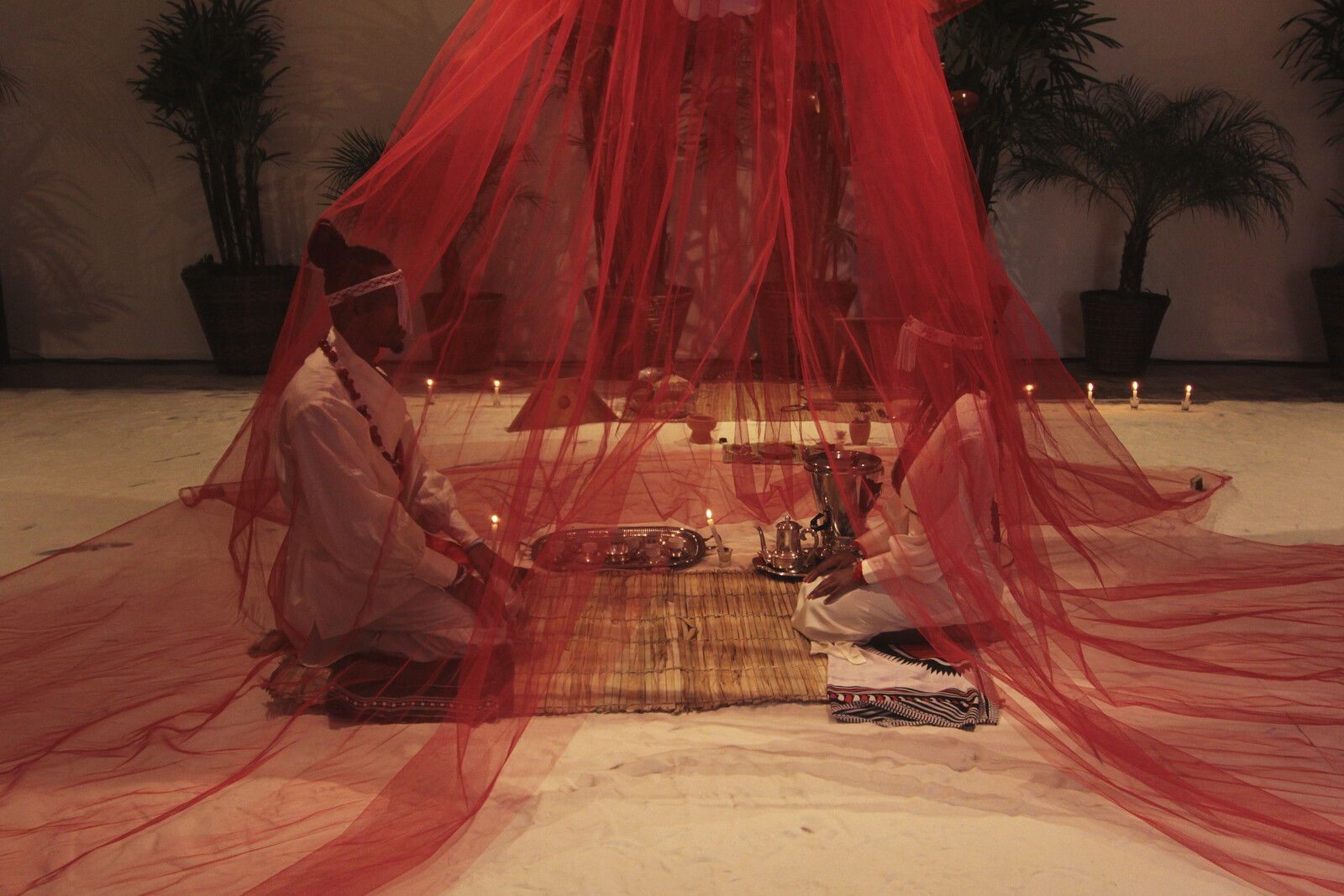
Ever since the 1960s, groups of idealistic South Africans have periodically banded together to stage ambitious group exhibitions informed by the prevailing zeitgeist and framed by a promise of regular return. Yet if there is a common thread to defunct biennial and triennial expositions like Art South Africa Today (1963–75), Cape Town Triennial (1982–91), Johannesburg Biennale (1995–97), and Cape Biennale (2007–09), it is their brief nature and anemic legacy: their methods and achievements have largely been forgotten. One consequence of this weak transmission of history is that exhibitions like the newly launched Stellenbosch Triennale, a patchy but ultimately engaging project staged at various venues an hour’s drive northeast from Cape Town, end up seeming unique and even daring, particularly in an ecology dominated, over the last decade, by art fairs.
Commercialism has come to define the current zeitgeist, but that is not what makes this large-scale exhibition so of the moment. At a press conference launching the main curated exhibition, a confident showcase of twenty African artists overseen by curators Khanyisile Mbongwa and Bernard Akoi-Jackson, various speakers highlighted what curatorial advisor Jay Pather summarized as Stellenbosch’s “deeply problematic context.” A former intellectual redoubt for apartheid ideologues and bolt-hole for plutocrats …
March 15, 2019 – Review
Bronwyn Katz’s “/ // ! ǂ”
Sean O’Toole
%20Installation%20view%205,%20blank%20projects.jpg,1600)
Axis is a signifier in sculpture, and South African artist Bronwyn Katz has a history of making resolutely vertical sculptural pieces. Installed in the main gallery of her phonetically engaged exhibition “/ // ! ǂ” at Blank Projects are two dozen slender columns made of steel wool and cardboard, their gray surface covered with a weave of raspy copper mesh. Flanked by three flowing wire tapestries of variable lengths and widths, titled kx (i)–(iii) (2019), the vertical form of Katz’s enigmatic floor piece, x (2019), recalls her breakthrough BFA work, Ouma Grootjie [Grandma] (2015), a freestanding column made of gray bricks and green soap blocks that, still now, reads as steadfast exclamation mark from a year colonial statues were toppled in South Africa.
Katz, who graduated from the University of Cape Town in 2015 with an impressive cohort that included Simphiwe Ndzube and Siwa Mgoboza, has quickly distinguished herself with her coolly minimal abstract sculptures exploring social issues around land, homelessness, and belonging. A founding member of the all-women collective iQhiya, who participated in Documenta 14, Katz’s personal work has been widely exhibited too, notably in Dakar, Marrakesh, and Paris. The artist’s 2018 solo exhibition at the Palais de Tokyo featured …
January 19, 2018 – Review
“Publishing Against the Grain”
Sean O’Toole
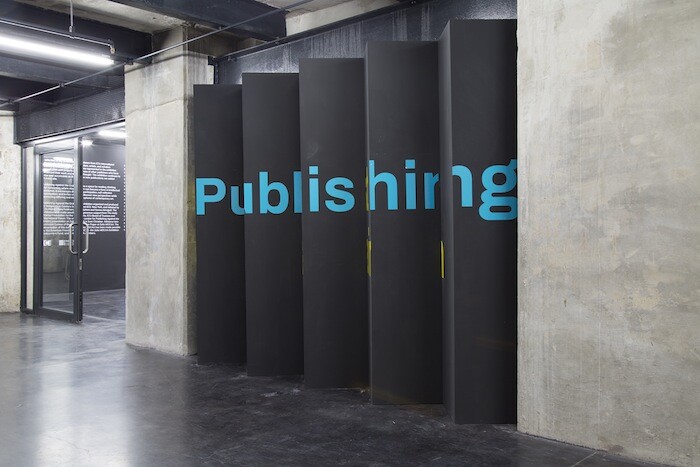
One of my earliest writing gigs was for Casper, a short-lived little magazine founded in May 1998 by artists Luis Felipe Ortega, Daniel Guzmán, Gabriel Kuri, and Damián Ortega. I was vacationing in Mexico City and during a two-week stay with Kuri was co-opted into writing about Osaka’s noise music underground for one of the magazine’s eventual thirteen installments. My expertise was tenuous: I lived in Japan at the time, had attended a couple of live shows, and owned copies of Matt Kaufman’s ribald zine Exile Osaka. Kuri though was an encouraging editor. Months later, I received a decorated A5 envelope containing a staple-bound issue of Casper, my wonky article included among its mix of original and plundered content.
This ludic way of creating a community and sharing ideas may seem quaint in the age of social media, but it nonetheless persists. Included among the thirty-eight mostly print magazines in “Publishing Against the Grain,” a surprisingly diverse showcase of independent publishing from five continents, is Stationary. Published by Mimi Brown, of not-for-profit Spring Workshop in Hong Kong, and distributed by word of mouth, Stationary first materialized in 2015. The launch issue was guest edited by artist Heman Chong and Christina Li, …
September 21, 2017 – Review
“the silences between”
Sean O’Toole
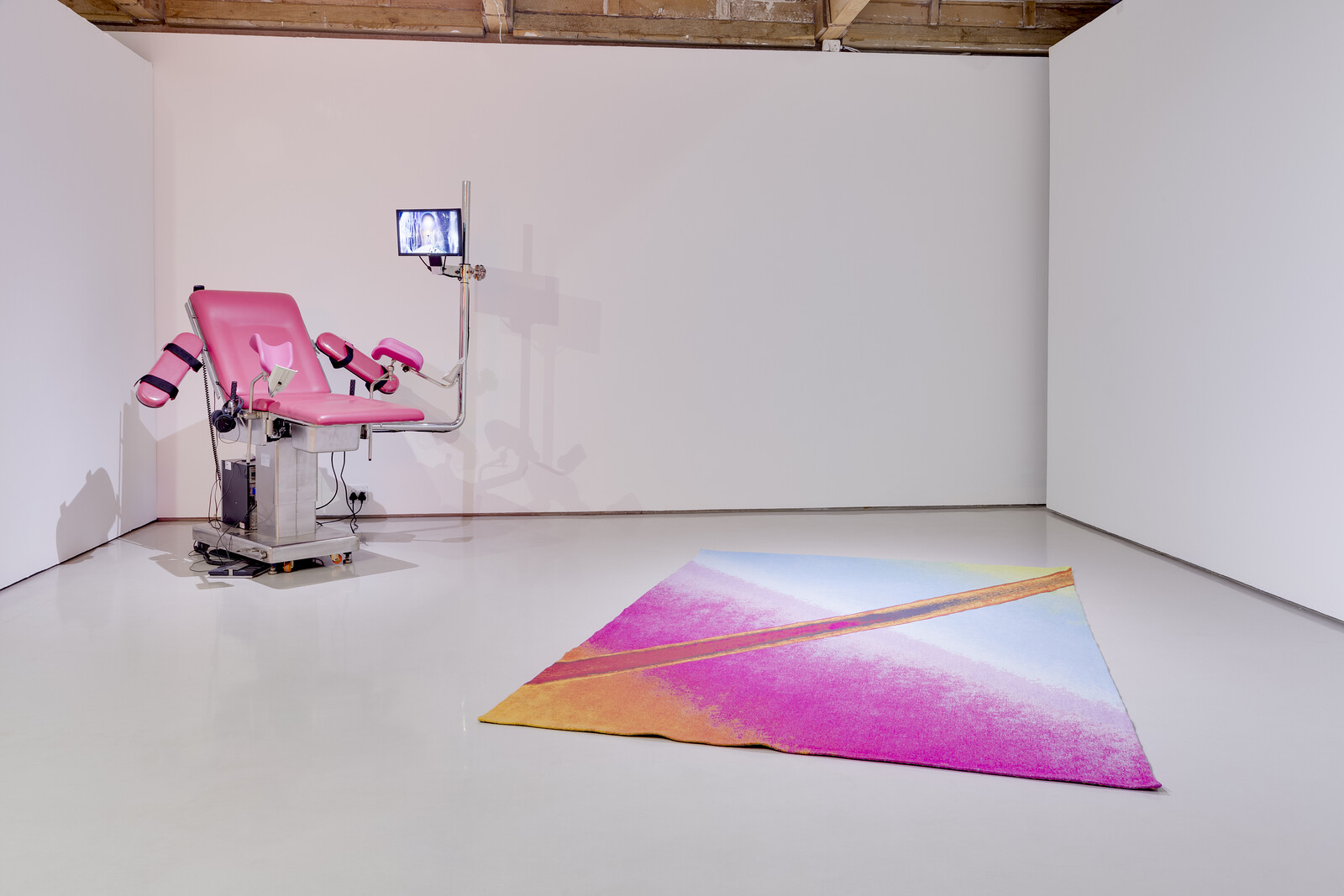
The flourishing of South Africa’s commercial galleries over the last two decades has coincided with the atrophying of infrastructure, collections, and curatorial programs at the country’s major public museums. State neglect, hobbled budgets, and poor leadership at the South African National Gallery in Cape Town, as well as important municipal museums in Johannesburg and Durban, have resulted in, among other things, the ceding of curatorial narrative to the marketplace during the post-apartheid period. Over the last decade and in the absence of competition, retail enterprises like Goodman Gallery, Stevenson, and Whatiftheworld/Gallery have all staged ambitious group exhibitions mobilized around worldly themes that have served to introduce artists like Karo Akpokiere, Stan Douglas, Glenn Ligon, Julie Mehretu, Paulo Nazareth, and Lynette Yiadom-Boakye to a South African audience. For all their mobility and capital, commercial galleries also work within a system of constraints, with worldliness often shrunk to fit a partisan narrative.
“the silences between” typifies this history. Taking its title from a 1982 book by New Zealand author Keri Hulme, Goodman Gallery curator Emma Laurence’s feminist-inflected exhibition explores what Hulme described as “the writing of history and what is left out.” Her exhibition is, however, wholly made up of Goodman Gallery artists, …
February 24, 2017 – Review
Robin Rhode’s “Paths and Fields”
Sean O’Toole
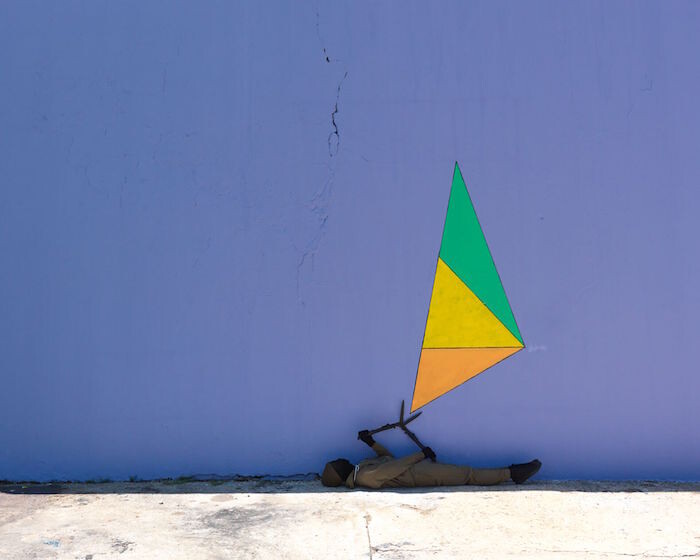
Berlin-based Robin Rhode’s third solo exhibition with Stevenson is an accomplished recapitulation of ideas and gestures that have featured in his mature practice since leaving South Africa in the mid-2000s. Rhode’s work is grounded in repetition, notably his Eadweard Muybridge-like photo animations, which here include Paradise (2016) and Inverted Cycle (2016). These sequentially choreographed still performances incrementally explore a concise narrative, here to do with color theory. But when does formal repetition become empty rehearsal? The question lingers in the interstices of this polished show, which is composed of drawings, sculpture, photographs, and films. The loose choreography of the works allows for an episodic encounter, or, to improvise on the show’s title, suggests various paths and routes to an answer.
The atomized form of “Paths and Fields” also offers a flashback to curator Stephanie Rosenthal’s layout of the artist’s 2008 London debut, “Robin Rhode: Who Saw Who” at the Hayward Gallery, a heterogeneous showcase grounded in Rhode’s evolving interests in street culture—notably skateboarding and graffiti—and various postwar avant-gardes. The Hayward show was notable for including early examples of the artist’s abstract paintings and drawings, which here retain their hesitant, gee-whiz quality. Works on White Paper IV (2008), an oil stick drawing …
July 16, 2015 – Review
"Speaking Back"
Morgan Quaintance
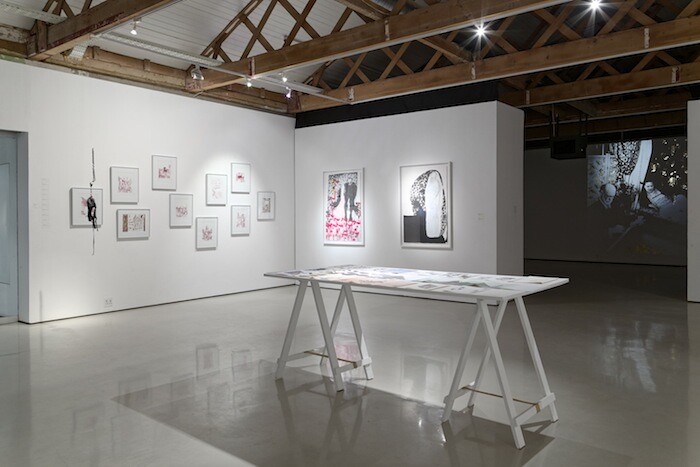
On a long drive into the city our tour guide, a “colored”(1) woman and self-confessed strict Old Testament observer, railed against recent student activism at the University of Cape Town: “They pulled down the statue of Cecil Rhodes and he did more for the black people than they have done for themselves.” This is how it is with a certain generation, I’m told. Scratch the surface and the old hissing, prejudicial illogics of empire and apartheid can still be found. White English against white Afrikaners, coloreds against blacks, every self against every Other. These are tensions that compound social divisions, exacerbate the unequal distribution of wealth, and rationalize a brutal reality of social cleansing that gentrification seems too florid a word to describe. In a town this politically charged, what use are the subtle, indirect, and oblique forces of contemporary art?
“Speaking Back,” at Goodman Gallery, is offered as a possible response to teleological questions like the one above. In the guise of an exhibition as social interstice, a locus in which marginal and muted subject positions are given voice, the innovative and often startling works of 13 predominantly black African and African American women are installed as possible contributions to …
February 9, 2015 – Review
Kemang Wa Lehulere’s "To whom it may concern"
Nancy Dantas
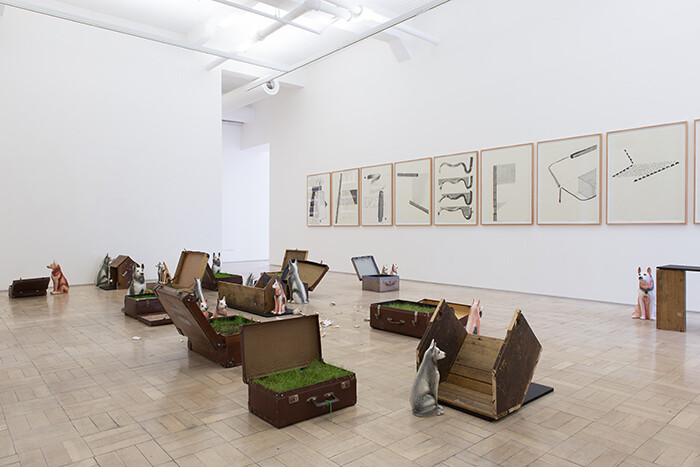
If mourning is a working-through of past history, a process that, if effective, results in a letting go, then South African-born Kemang Wa Lehulere embodies the melancholic, the subject who refuses to release the lost object; a grieving subject whose pain knows no end.
When considering the work of Kemang Wa Lehulere, it seems he too belongs to a long tradition of artists born under Saturn. His oeuvre consistently maintains a multitude of links to the past and his current exhibition at Stevenson Gallery in Cape Town is no exception, standing as an example of a tangled, febrile, visual story told in parts. Densely populated, perhaps in excess, by the plethora of mediums he uses—ranging from sculpture and photography to large oneiric chalk drawings on walls, to works on paper and smaller, alternately protruding blackboards with further drawings—the artist exhumes the ruins of Apartheid, digging into the compacted sands of history as he literally does in the video piece Homeless Song 2 (2015). In this work, a shirtless Wa Lehulere uses a rather fragile-looking music stand as a tool to displace the fine yellow dust on a privately-owned Johannesburg mine dump. The act comes to an abrupt end with the arrival …
Load more
